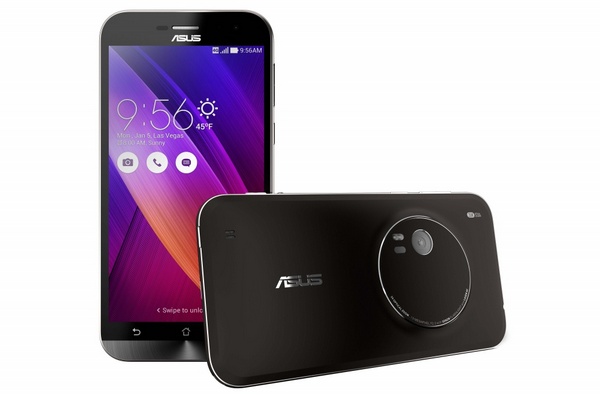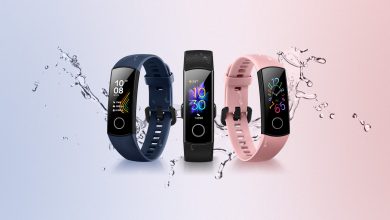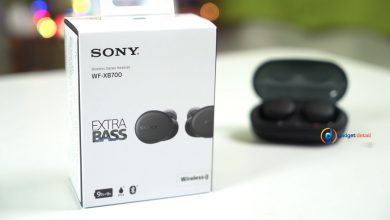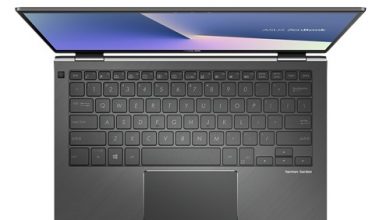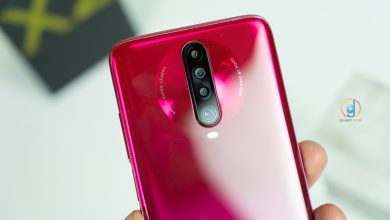Zenfone Zoom – The flagship camera mobile – Review
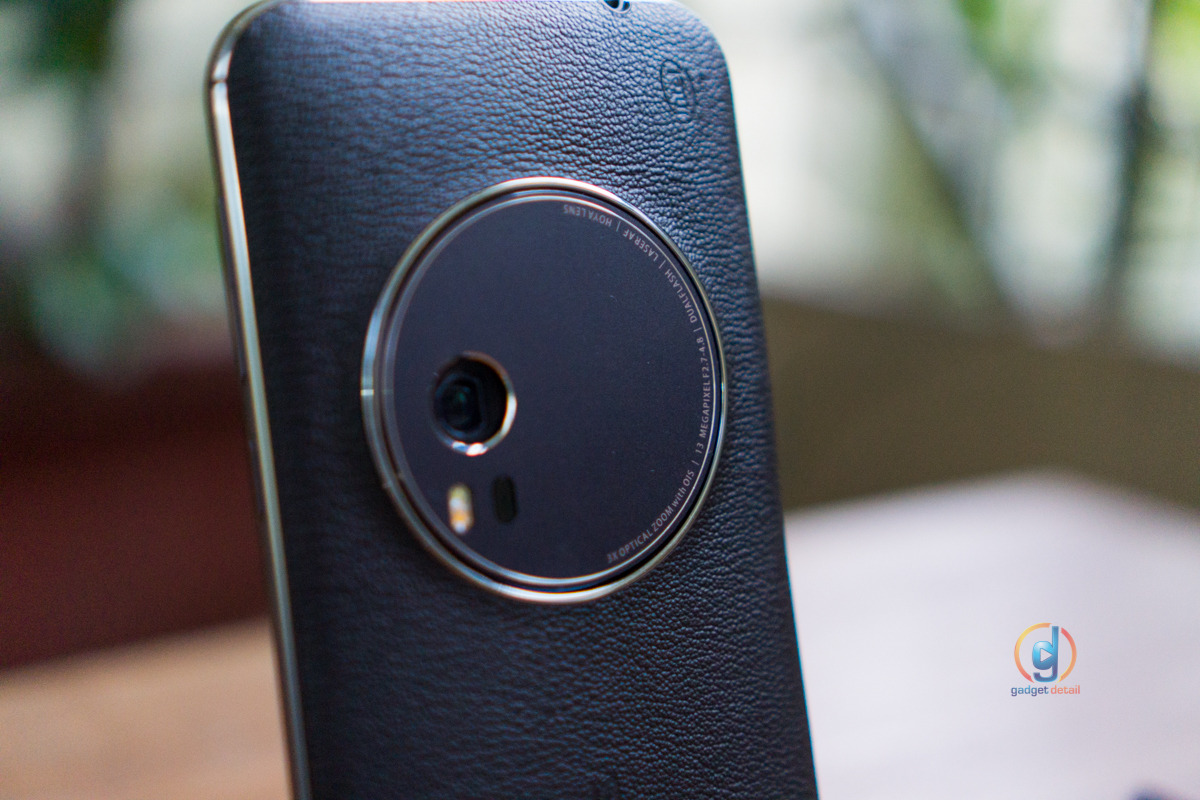
What I like
- The Zenfone Zoom packs in a powerful hardware and a great camera. The 3 x optical zoom camera system does not protrude out of the body like most other mobiles.
What I didn’t like
- Nothing in particular. But if I had to nitpick, I would say the absence of dual SIM slot, non-backlit menu buttons and average battery life.
Zenfone Zoom was announced in the IFA last year and we have been hearing about the device in many Asus events. The device has managed to get the attention of many, and now the wait is finally over. The Zenfone Zoom has been launched in India and it is available to buy from Amazon for Rs 37999. The Zenfone Zoom, unlike the other camera mobile will not only cater to a niche market of the mobile photography enthusiasts, but as it packs in a lot of power, it is a good contender as a flagship mobile. Let’s dive in and check if the Zenfone Zoom would be of any interest to you.
Unboxing Video
Design
The Zenfone Zoom is a 5.5 inch mobile. The design language is on the lines with other Zenfones, but with a slight variation. The back panel is made of a plastic material with real leather laced on it. The sides of the mobile is made of metal. Leather back and metal rim gives the mobile a premium look and feel. The right side of the mobile has all the hardware keys. Dedicated shutter and video record button, power button and the volume keys are all made of metal. The volume keys acts as zoom keys when in camera mode. The power and record button have very less tactile feedback. The mobile fits in a single hand, but one hand operation is out of question. It feels heavy but the thinnest side of the mobile measures just 5 mm. Overall, the leather finish and the curved design of the mobile adds points to the ergonomics.
The front has the large 5.5 inch display with thin bezels and a deep chin. The chin holds the off-screen navigation keys and they are not back-lit. The front facing camera is 8 MP and the rear facing camera is the 13 MP laser assisted camera with dual tone LED flash. The build quality and the design make me conclude that it is a sturdy device, with a stylish finish to it.
Display
The Zenfone 2 Laser 6 has a 5.5 inch IPD LCD display with 403 ppi of pixel density. It supports a resolution of 1920 x 1080. The screen produces decent black levels and brightness levels. Outdoor legibility was good, but under direct sunlight, the readability of the device is just average. The color reproduction is vibrant and the display has very good viewing angles. The screen occupies just 65% of the body but it is a bright and brilliant display. The display is protected with Corning Gorilla Glass 3 protection.
Hardware
This Zoom Variant of the Zenfone is powered by Intel Atom Moorefield Z3590 super quad processor, clocked at 2.5 GHz. It has 4 GB of RAM and 128 GB of onboard storage. Memory is also expandable by another 128 GB. This is most powerful configuration we have seen in a Zenfone. The performance of the mobile is commendable. The graphic performance is also above average. It handles intense gaming with ease and shows no signs of stuttering or frame lag. 3D rendering is smooth as well. ZenFone Zoom handles the OS and the UI on top of it efficiently. The mobile did not heat excessively. On continuous gaming for over 30 minutes, the temperature went upto 37 degree Celsius. So at the end of the day, the ZenFone Zoom is truly a flagship performer and does not disappoint in performance thanks to Intel’s Atom Moorefield SoC and the massive 4 GB RAM that can hold a ginormous amount of data. You can also check out the benchmark scores under the specs section below.
Asus Zenfone Zoom
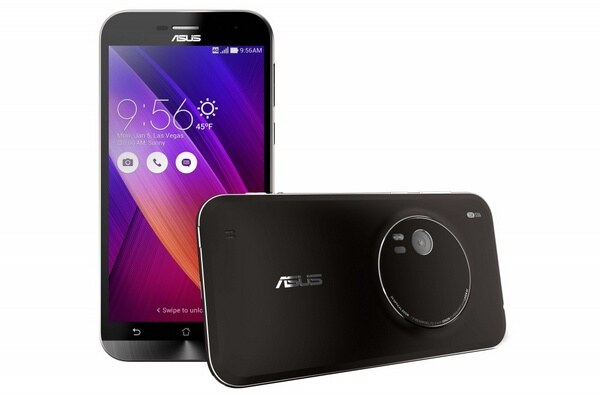



-
CPU:
-
RAM:
-
Storage:
-
Display:
-
Camera:
-
OS:
Specs
General
| Status | Available |
Display
| Display Type <strong>Display Technology => </strong> A number of display technologies and types used in mobile phones => TFT (Thin Film Transistor), IPS (In-Place Switching), OLED (Organic Light Emitting Diode), AMOLED (Active-Matrix Organic Light-Emitting Diode), Super AMOLED (an even advanced version of AMOLED), Resistive Touchscreen (Resistive touchscreens contain two layer of conductive material with a very small gap between them which acts as a resistance), Capacitive Touchsceen (Capacitive touchscreen technology consists of a layer of glass coated with a transparent conductor) | IPS capacitive touchscreen |
| Size | 5.5 inches |
| Resolution | 1080 x 1920 pixels |
| Pixel Density <strong>Pixel Density (PPI)</strong> is refers to the concentration of pixels on a particular display, measured in pixels per inch (ppi). Pixel density is calculated by dividing the diagonal pixel resolution of a display by its diagonal size, higher pixel density better display quality. | 403 ppi |
| Display Protection <strong>Display Protection => </strong> Gorilla Glass is a special alkali-aluminosilicate glass shield with exceptional damage resistance that helps protect mobile displays from scratches, drops, and bumps of everyday use, It is always better to go for a smartphone with Gorilla Glass for that added protection and peace of mind. | Corning Gorilla Glass 3 |
| Secondary Display | No |
Hardware
| Chipset <strong>Chipset</strong> is a group of integrated circuits designed to perform one or a more dedicated functions, often with real time computing constraints, Popular smartphones are equipped with more advanced embedded chipsets that can do many different tasks depending on their programming. | Intel Atom Z3580 |
| CPU <strong>CPU</strong> (Central Processing Unit) mostly known as processors, CPU processes instructions in order to carry out certain functions that make your device operate properly. Processors are often described as the brain of computers, smartphones and tablets, Smartphones and tablets rely on processors to carry out their every task, Processors are an incredibly important factor in selecting any type of computing device, including your smartphone. | Quad-core 2.3 GHz |
| GPU <strong>GPU</strong> (Graphics Processing Unit) is a single-chip processor designed to rapidly manipulate and alter memory to accelerate the creation of images in a frame buffer intended for output to a display, This includes things such as lighting effects, object transformations, and 3D motion. | PowerVR G6430 |
| RAM (Memory) <strong>RAM</strong> (Random Access Memory) is a type of computer memory that can be accessed randomly, any byte of memory can be accessed without touching the preceding bytes that allows information to be stored and accessed quickly from random locations. RAM is the most common type of memory found in computer systems, smartphones, tablets and other electronic devices. | 4 GB |
| Internal Storage <strong>Internal Storage</strong> is a data storage space (flash memory) mostly used in smartphones, tablets and other electronic devices where operating system, apps, music, photos, videos, files and other user data Is stored. | 128 GB |
| Card Slot <strong>Memory Card Slot</strong> is a special slot for inserting a memory card. Memory cards allow you to expand the phone's built-in memory, A memory card (sometimes called a flash memory card or a storage card) is a small storage medium used to store data such as text, pictures, audio, and video, for use on small, portable or remote computing devices such as mobile phones, mp3 players, digital cameras. | microSD, up to 64 GB |
| Sensors <strong>Sensors</strong> are electronic components that detects and responds to some type of input from the physical environment. The specific input could be light, heat, motion, moisture, pressure and location, The output is generally a signal that is converted to use in computing systems, a location sensor, such as a GPS receiver is able to detect current location of your electronic device. | Accelerometer, gyro, proximity, compass |
Battery
| Battery Type <strong>Battery Type => </strong> Cell phones run on various kinds of batteries depending on the manufacturer, phone size or shape and features. There are basically four types of cell phone batteries => Lithium Polymer, Lithium Ion, Nickel Metal Hydride and Nickel Cadmium. | Li-Poly (Lithium Polymer) |
| Capacity <strong>Battery Capacity</strong> is a measure (typically in Amp-hr) of the charge stored by the battery, and is determined by the mass of active material contained in the battery. The battery capacity represents the maximum amount of energy that can be extracted from the battery under certain conditions. | 3000 mAh |
Camera
| Primary <strong>Camera</strong> is able to capture photographs and usually videos, The most important characteristics of a camera are the resolution (measured in megapixels), lens focus type (fixed or automatic), higher megapixel cameras are known to capture higher quality photos, but not always a good measurement of the photos quality. | 13 MP |
| Camera Features | Geo-tagging, touch focus, face detection, panorama, HDR |
| Secondary | 5 MP |
| Flash <strong>Flash Light => </strong> There is commonly two types of flash lights are used in camera mobile phones, LED Flash (LED flash offers lower power consumption with drive circuitry that takes up very little room, LEDs can be strobed faster than any other light source), Xenon Flash (xenon flash produces an extremely intense full-spectrum white light for a very short duration) | Dual-LED flash |
Design
| Type <strong>Design Type</strong> called form factor refers to a mobile phone's size, shape, and style as well as the layout and position of major components of phone. There are three major form factors seen in mobile phones => bar phones, folding phones and sliding phones. | Bar |
| Dimensions | 158.9 x 78.8 x 12 mm |
| Weight | 185 g |
| Colors | Meteorite black and Glacier white |
Network
| SIM <strong>SIM</strong> (Subscriber Identity Module) is a small card that contains mobile network subscriber's account information. This allows the phone using the card to attach to a mobile network. The SIM card is most commonly associated with GSM and UMTS mobile networks. Moving a SIM card from one phone to another allows a subscriber to switch mobile phones without having to contact their mobile network carrier. SIM cards can also be used by a phone to store limited amounts of data, such as phone numbers and text messages. | Micro SIM |
| Dual SIM | Yes |
| 2G Network | GSM 850 / 900 / 1800 / 1900 |
| 3G Network | HSDPA 850 / 900 / 1900 / 2100 |
| 4G Network |
LTE band 1(2100), 2(1900), 3(1800), 4(1700/2100), 5(850), 7(2600), 8(900), 9(1800), 17(700), 18(800), 19(800), 20(800), 28(700), 29(700) LTE band 38(2600), 39(1900), 40(2300), 41(2500) |
Software
| Operating System <strong>OS => </strong> Every computer system run on a base software called Operating System (OS). Operating System controls all basic operations of the computer (such as smartphone, PDAs, tablet computers and other handheld devices). The Operating System allows the user to install and run third party applications (apps), apps are used to add new functionality to the device. | Android |
| User Interface <strong>UI</strong> or user interface of a device is the look and feel of the on-screen menu system. How it works, its color scheme, how it responds to button presses, all of these things are part of the user interface. | ASUS ZenUI |
Connectivity
| Bluetooth <strong>Bluetooth</strong> is a wireless communications technology for exchanging data between mobile phones, headsets, computers and other network devices over short distances without wires, Bluetooth technology was primarily designed to support simple wireless networking of personal consumer devices. | v4.0 |
| Infrared <strong>Infrared</strong> connectivity is an old wireless technology used to connect two electronic devices. It uses a beam of infrared light to transmit information and so requires direct line of sight and operates only at close range. | |
| Wi-fi <strong>Wi-Fi</strong> is a popular wireless networking technology using radio waves to provide high-speed network connections that allows devices to communicate without cords or cables, Wi-Fi is increasingly becoming the preferred mode of internet connectivity all over the world. | 802.11 a/b/g/n/ac, Wi-Fi Direct, hotspot |
| USB | microUSB v2.0 |
| GPS <strong>GPS</strong> The Global Positioning System is a satellite-based radio navigation system, GPS permits users to determine their position, velocity and the time 24 hours a day, in all weather, anywhere in the world, In order to locate your position, your device or GPS receiver must have a clear view of the sky. | Yes |
| NFC <strong>NFC</strong> (Near field communication) is a set of standards for smartphones and similar devices to establish peer-to-peer radio communications with each other by touching them together or bringing them into proximity, usually no more than a few inches. |
Benchmarks
| 3D Mark Gamers Benchmark | 12898 IceStorm |
| Antutu | 63878 |
| Basemark OS 2 | 1234 |
| Basemark X | 19016 |
| Geekbench 3 Multicore | 2970 |
| Geekbench 3 Single Core | 966 |
| Geekbench Battery | 2843 |
| Quadrant | 24937 |
| Velamo Metal | 1553 |
| Velamo Multicore | 1568 |
Reviews
The call quality is clear and the signal reception is consistent. The rear facing speakers are loud and crisp as well. They produce quality sound and on closer inspection I figured out that it is a 5 magnet speaker with cavity design for better performance. Zenfone Zoom has 2 mics for noise cancellation. Asus has included a pair of in-ear headphones and it’s of good quality as well.
Camera
Probably you are here specifically to read this section. The Camera is the heart and soul of the Zenfone Zoom. The primary camera is a 13 MP Panasonic SmartFSI image sensor. The lens is a 10 element arrangement made by Hoya. The lens has got variable aperture varying from f/2.7 to f/4.8. While most mobiles out there have f/2, the smaller f/2.7 on the Zenfone Zoom is perfectly understandable due to its optical zoom range. The highlight of the mobile is its 3x zoom and the optical zoom does not involve any moving element outside the mobile chassis. The zoom mechanism is entirely internal. The hump on the back reminds me of the Lumia 1020. But the Lumia 1020 has a large 41 MP sensor and hence the hump. While the Zenfone zoom has an internal zoom mechanmism and that is the reason for the hump. The hump makes the mobile 12 mm thin on its thickest side.
The 3x optical zoom can be extended by 12x with digital zoom. The closes focusing range for the mobile is 5cm and you have to completely zoom out to get close with the subject. Apart from the zoom, this zenfone has optical image stabilization and laser autofocus. The laser assisted focusing is fast and precise. It has evolved to become more accurate than its predecessors. The camera is assisted by a dual tone LED flash. I am not a big fan of flash, but the dual tone flash is pleasantly mild on skin tones. The front camera is a 8 MP sensor.

In the auto mode, the UI controls are simple. Though there are different preset modes, the HDR and Low light mode are automatically suggested based on the light conditions. The gear button reveals the menu for both camera and video. In the ZenFone the manual mode can control the White balance, Exposure compensation, ISO, shutter speed and focus.
The quality of images from the Zenfone Zoom is great. The images have natural colors. The color saturation is just right. However the black levels should have been a bit deeper. The exposure is perfect and focus locking happens instantly. Exposure can also be locked and adjusted. The low light performance of the mobile is great as well. Thanks to the PixelMaster algorithm, the image post processing does its job perfectly. The 4 level OIS is helpful under low light and also while zooming. The zoom is noiseless and happens quickly. The noise smoothing algorithm does a very good job. The time between two shots is very less. There is no lag or wait time, unless you are clicking a HDR shot or a super resolution image.
Check out the camera image samples below. I suggest you open the link in flickr and inspect each image closely to understand better.
In total, the Zenfone Zoom is a great camera mobile. It can be a good secondary camera for professional photographers as well. Even if you are not a photographer, you will appreciate the quality of the images from the Zenfone zoom and will be able to make use of the camera module in a jiffy, thanks to the simple and functional camera UI.
Software
The Asus Zenfone Zoom runs on a year old Android 5.0 out of the box with the Zen UI 2.0 on the top. The Zen UI has a long list of pre-installed applications. Most of these apps have better alternatives in the Google Play store and these apps cannot be uninstalled. So I would call them bloatware sitting on the mobile and eating up the space. I like the Zen Mini movies and Super Note apps out of all these bloat wares. Asus has also tried to reinvent the Notifications UI. But this has already been done by the Native android lollipop and I don’t see a pressing need to redesign it. Asus must really have gone the Motorola way, which gives “Close to pure android” experience with a few custom apps pre-installed. Zen UI has very little customization possibilities. But overall the UI is fast and snappy. It does not lag and definitely smoother than the likes of Touch Wiz or SenseUI. In total, the Zen UI is a mixed bag as usual.
Battery
Like most of the mid and top end Zenfones, the Asus Zenfone Zoom is also powered by a 3000 mAh battery. The battery usage is much better optimized when compared to ZenFone 2. It has the turbo charging feature like the ZenFone 2. It takes less than 40 minutes to charge from 0 to 60%. But after 60% the charging is very slow. My average usage would mean a few minutes on call everyday, constantly checking social media updates, 4G always on, connected to WiFi 10 hours a day, watching video clips and listening to music for a few hours. With my average usage, the mobile lasted for 18-20 hours on a single charge. On intense usage, the mobile runs out of juice in 14 hours. The geekbench battery test results are not encouraging either. So the battery performance is average.
Verdict
The Asus Zenfone Zoom has the best of all the Zenfones so far. It has good quality construction, turbo charging and a powerful hardware from the Zenfone 2. It has laser assisted auto focus from the Zenfone Laser series. But it also has inherited some of the weak chromosomes like the average battery life and mundane UI. Yet, nothing would stop me from recommending this mobile as your next great pocket assistant. It is priced at Rs 37999. At that price, it is definitely an expensive buy. But here is what you are paying for: 128 GB of internal storage, Optical zoom camera, 2.5 GHz octacore processor and a 4 GB RAM. If you want a powerful mobile with an awesome camera with optical zoom, then you have no other choice other than the Zenfone Zoom.




